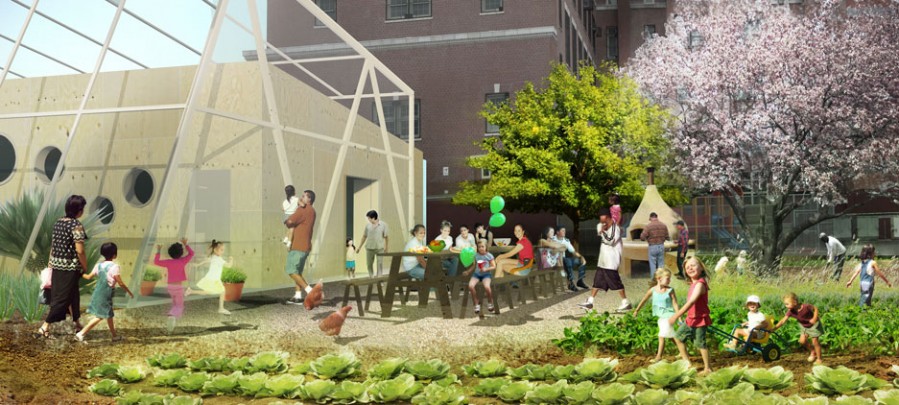Upon entering the Anna-Maria and Stephen Kellen Gallery, visitors are surrounded by the scent of clean wood and the sound of bees buzzing from a recording above. These are sensations New Yorkers might consider foreign, belonging to rural settings where land is abundant. With a few steps further into the gallery, visitors will see that this assumption is not true. A timely exhibit that opens discussion and calls for change in the evolving urban agricultural landscape, Living Concrete/Carrot City was co-curated by Radhika Subramaniam and Nevin Cohen, in collaboration with curators from Ryerson University. Radhika Subramaniam, the Sheila C. Johnson Design Center Gallery Director, met with me to speak about the exhibit’s intentions, inspirations, and the process of its creation.
“The crisis in food is front and center. Absurd though it is, food insecurities and food related illnesses exist alongside a growing interest in fresh food and new ways of eating in New York City,” Radhika Subramaniam answers when I ask why she and Nevin Cohen have chosen to curate Living Concrete/Carrot City now, and why she thinks interest in local foods and urban farming is currently generating increased public awareness.
Battles over community gardens continue. Great numbers of people subsist on fast food, and their health is affected poorly. Change is necessary. “Everyone has a relationship with food,” Professor Subramaniam notes, and in this exhibit, “many different constituencies can find something to relate to.” A collaboration between two universities from different cities at the forefront of urban agricultural progress, Living Concrete/Carrot City brings two exhibitions together to open a dialogue between them. The catalyst for the collaboration was Carrot City, a traveling exhibit from Ryerson University in Toronto, curated by Mark Gorgolewski, June Komisar, and Joe Nasr. Their project presents designs made to constructively use urban space to cultivate food.
Living Concrete was generated in response to Carrot City, and draws from an array of New School studios and classes that reach across various fields of study. Nevin Cohen, Assistant Professor and Chair of the Environmental Studies program at Eugene Lang, writes on food systems and planning. Radhika Subramaniam, Assistant Professor at Parsons’ School of Art and Design History and Theory, researches interventionist urban art and the transformations it activates. When the co-curators came together and recognized the relevance that everyday urban life held for them in affecting large scale changes in policy and action, they were further inspired by the realization that this particular social issue spans across departments of The New School. Professor Subramaniam says that drawing from the disciplines of architecture, food and environmental studies, media studies, and design, Living Concrete “is meant as a broad conversation, inviting everyone from The New School and beyond.”




























